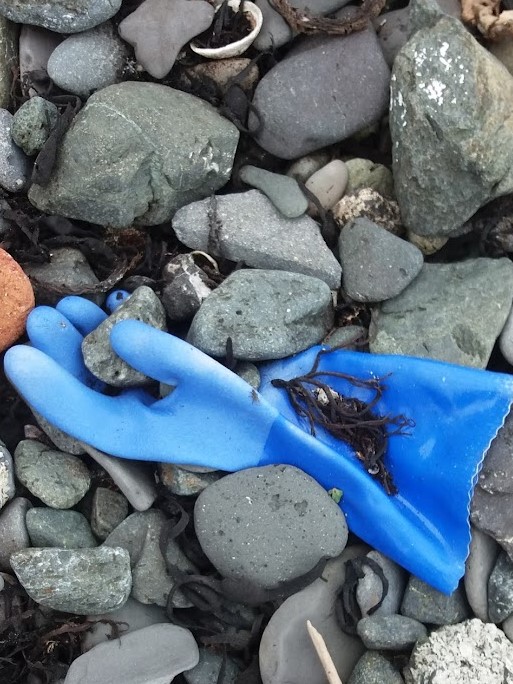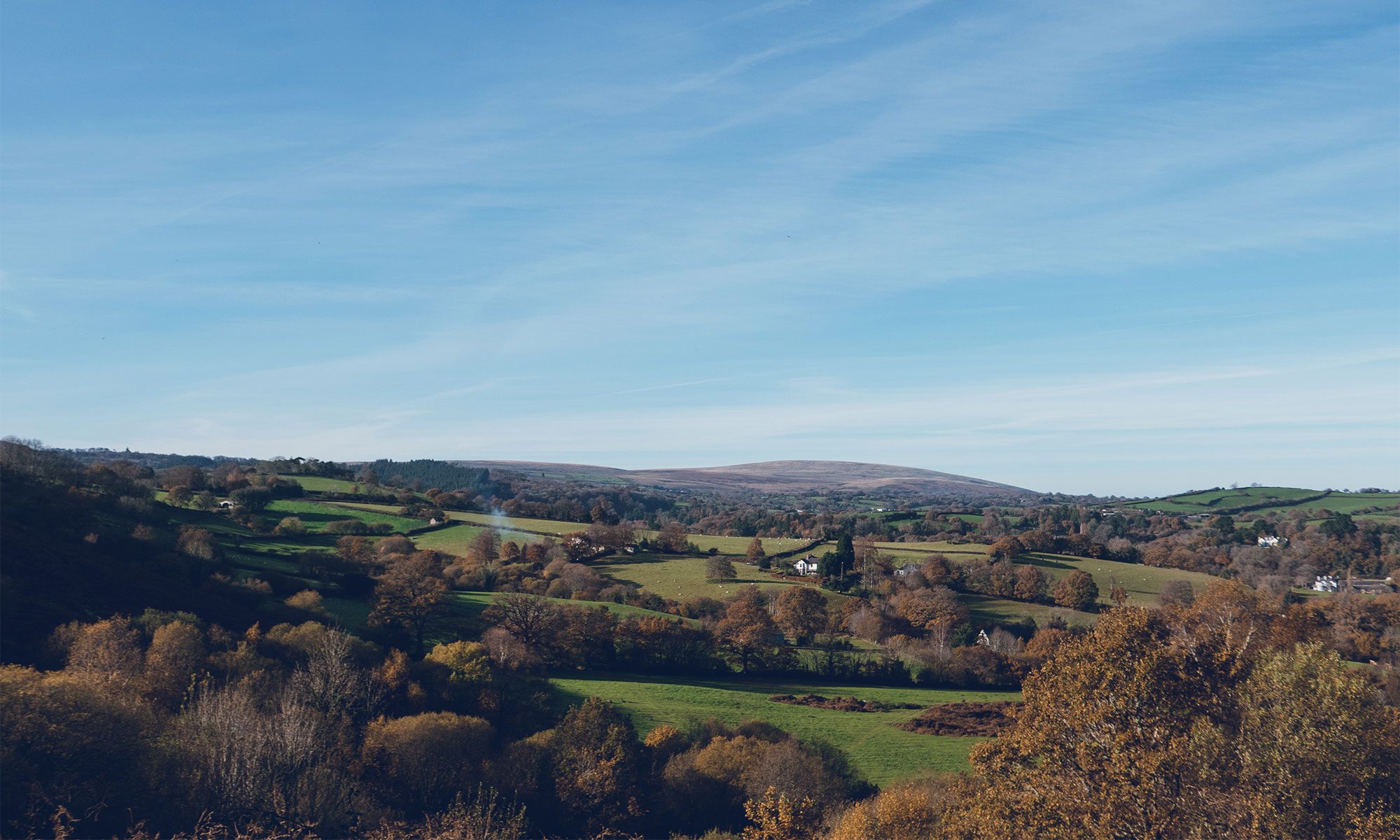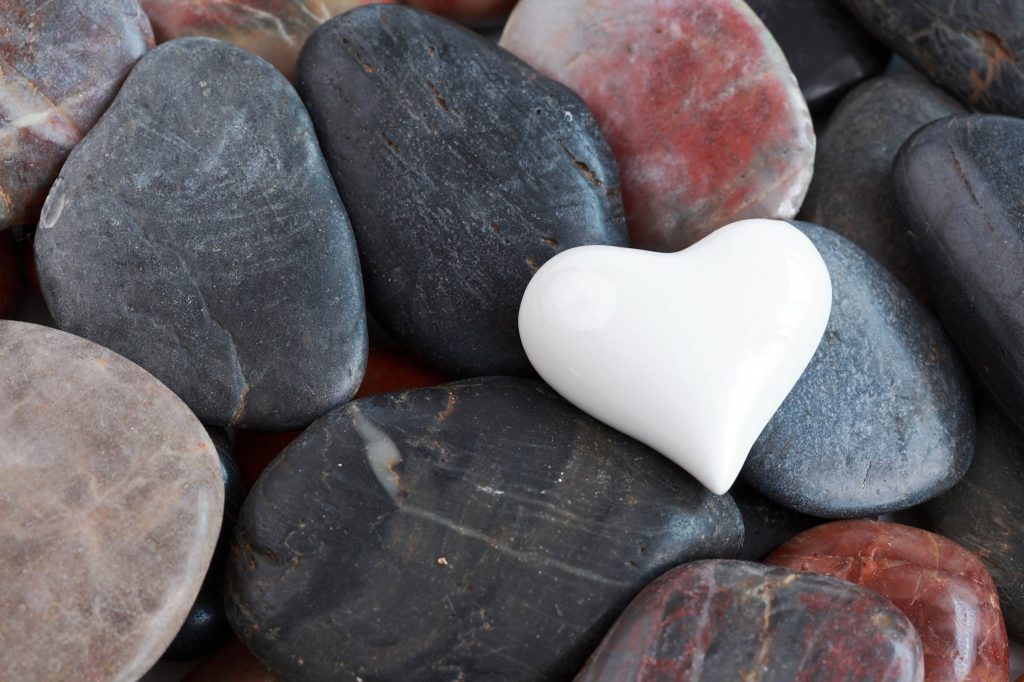What is the world asking of me?
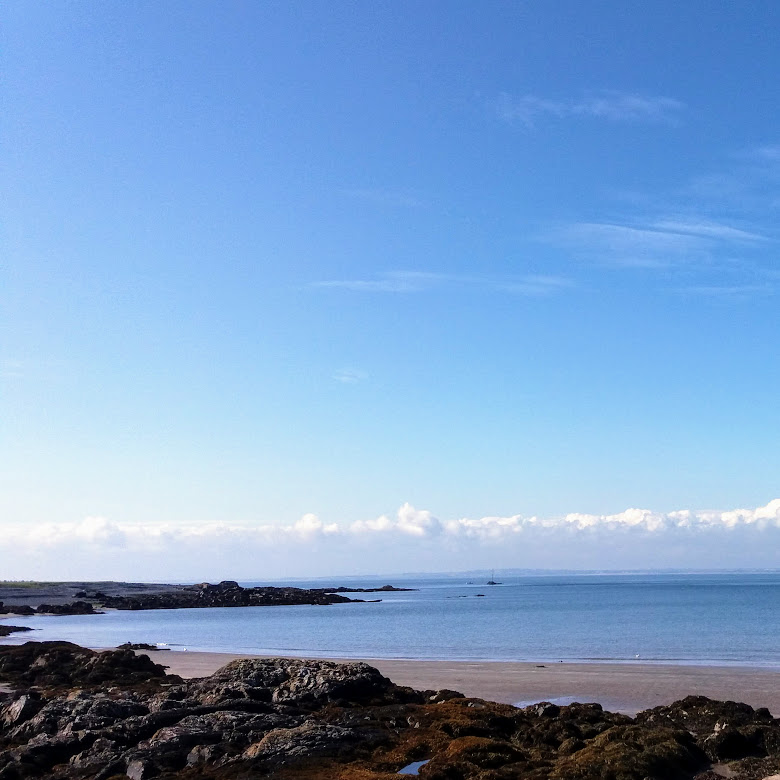
In September I spent a few glorious days on Lambay Island off the coast of Ireland. Today I’m sharing the walk I took on my second morning.
After breakfast I pick my way along the tide line following a dark dry trail of bladder-wrack.
There is so much plastic.
I’m tempted to turn away, shamed by the mess being made of the world. A mess I help make. A mess I don’t know how to tidy up. Even if I spent the morning litter picking I’m told getting the waste off island is a problem and of course there’ll always be more cast up on the next tide.
I could ignore it, but remember the words of a dear teacher, Joanna Macy who speaks of ‘holding the gaze’ with the world as it is, the better to listen to our fear, grief or anger at the unravelling of life pressing in on us from all sides. By turning towards it, she says, we might learn what our world is asking of us. So, thinking of her courage, vitality and sheer doggedness, I stay as present, and as open to ‘what is’ as I can manage.
At my feet a single feather points skyward. Lying next to it a knot of fishing line and a lime green picnic spoon. Bone white driftwood. Coiled blue rope. A yellow sandal, ‘adidas’ stamped on the side. There are limpet shells and flat skimming stones, glistening jellyfish, folded in on themselves, in death taking the shape of the rocks. Natural objects that ‘belong’ mixed up with opaque leavings. Unnameable shreds alongside familiar everyday containers emptied of use: white plastic table salt and yogurt pots; a lucozade bottle, and equally empty – a crab shell which I lift and turn in my hand, looking into tiny hollow eye holes.
But it’s a blue rubber glove, the left hand, that brings me to a standstill. Fingers curled tenderly around a palmful of gray pebbles and shreds of dried seaweed. There’s a vulnerability in the gesture, both offering and supplication. It breaks through my preoccupation with the stories I tell about myself and about the state of the world. I feel my hollow shell cracking open, a slipping sideways of my sense of ‘me-ness’, as this tide sculpted tangle reveals presences in both the spoiled and unspoiled world.
I turn to leave the cove returning to Joanna’s question: What is the world asking of me? The response flows through and out of me as far as the dark line of the horizon. There’s sorrow and shame, hope and hopelessness. The answer that surges to the surface as I see the beauty and the brokenness is ‘love’.
Love, I realise, has no frontiers. It will be essential as together we learn how best to navigate the ecological and climate challenges already impacting lives across the planet. The opening lines of a Mary Oliver poem run through my mind over and over, as I walk away ‘my work is loving the world.’
These talks are crucial, what happens after even more so. Whether I trust our leaders or not, we urgently need global agreement and action. I wonder, what turns action towards ‘right action’? Technology is essential, but without hearts that include the interconnectedness of human and ecological communities I fear technological fixes will be fatally flawed.
We cannot afford to fail. What is the world asking of me?
My work is loving the world.
Here the sunflowers, there the hummingbird –
equal seekers of sweetness.
Here the quickening yeast; there the blue plums.
Here the clam deep in the speckled sand.
Are my boots old? Is my coat torn?
Am I no longer young and still not half-perfect? Let me
keep my mind on what matters,
which is my work,
which is mostly standing still and learning to be astonished.
The phoebe, the delphinium.
The sheep in the pasture, and the pasture.
Which is mostly rejoicing, since all ingredients are here,
Which is gratitude, to be given a mind and a heart
and these body-clothes,
a mouth with which to give shouts of joy
to the moth and the wren, to the sleepy dug-up clam,
telling them all, over and over, how it is
that we live forever.
Mary Oliver
